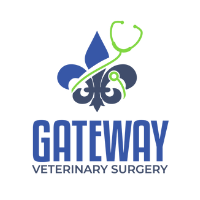FREQUENTLY ASKED QUESTIONS
FAQs
In order to better serve you, we are providing answers to some of the most commonly asked questions in regards to the procedures we conduct regularly. If you do not find what you are looking for here, please contact your local veterinarian or email the GVS staff.
Can the surgeons give me an estimate for my pet's upcoming surgery?
How long is recovery after a soft tissue surgery?
What happens at the 8 week TPLO medical progress examination?
If your pet is completely healed, you can begin to ease them into their normal routine. If there are any signs of muscle atrophy, effusion, or if the bone is not completely healed, your pet will be prescribed physical rehabilitation and will need to ease back to function over a 2-3 week period.
My dog hasn’t had a bowel movement since surgery?
What should my pet’s incision look like?
What is the importance of cold and warm compressions?
Does my pet need a Help ‘Em Up Harness after surgery?
When will I know the results from my pet’s culture/biopsy?
We typically have results within a week following surgery. As soon as we receive the results, we will contact you and discuss the proper course of treatment (if applicable). If it has been more than 7 business days from surgery and you have not received results, please contact your clinic.
How long is recovery after a TPLO?
8-12 weeks, assuming healing goes as expected. The first 4 weeks include strict cage rest.
What happens at the 4 week TPLO medical progress examination?
Progress radiographs will be taken to make sure healing is progressing as expected.
- Complications from over-activity, like effusion or tendonitis, can be diagnosed with these radiographs. If that’s the case, prolonged bed rest will be necessary
and NSAIDs may be prescribed for your pet. - If healing is as expected, your pet’s activity can be increased to “house arrest”. Restrictions are as followed:
- Confine to one level of the house without free access to the stairs.
- Running, jumping, climbing on and off furniture, stairs, and rough-housing are still prohibited./li>
- Time outside is limited to short, leash-controlled walks for elimination.
Why does my pet need follow up radiographs after an orthopedic surgery?
Does my pet need to wear an e-collar after surgery?
Yes, it is important that they wear their E-Collar at all times to prevent them from licking and chewing at their incision, which can lead to infection. If the site becomes infected, additional surgery may be required.
There are various types of e-collars that are available for purchase at your local pet stores. Please be sure to consult with your veterinarian to make sure you are purchasing the correct e-collar that is suitable for your pet’s needs.
- Many inflatable e-collars are not suitable for extremity surgeries (ie. TPLO, Lateral Suture, Medial Patellar Luxations) because many pets can still lick or chew at their legs and paws.
